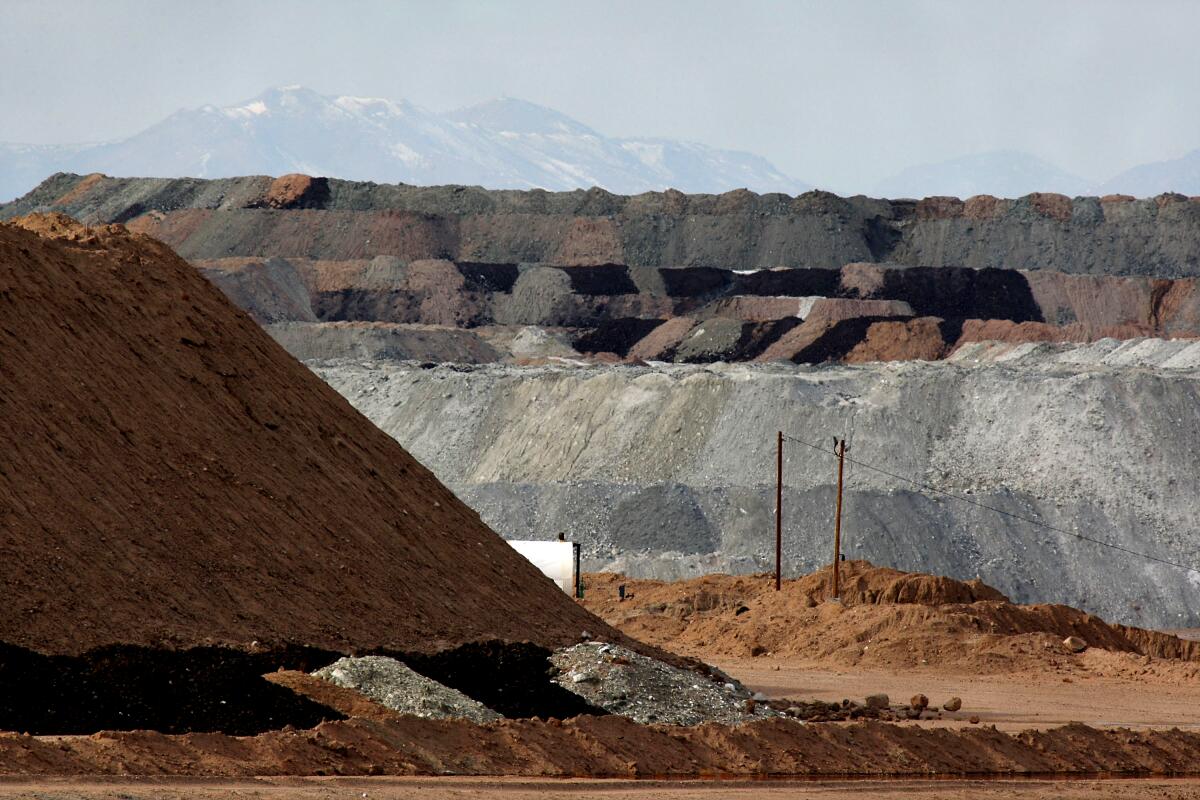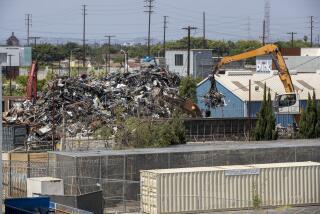Rio Tinto starts producing lithium in California from old mining waste

Rio Tinto Group is starting pilot production of lithium in California, sifting through old mining waste instead of excavating new areas, as the electric car battery revolution fuels demand for the material.
Work to reprocess waste piles from a 90-year-old mining site in the Kern County community of Boron has produced lithium carbonate — needed in rechargeable batteries for electric vehicles and consumer technology, Rio said this week. Efforts are now focused on improving quality and lifting volumes, the company said.
A pilot plant being assembled at Boron under a $10-million first phase is expected to produce about 10 metric tons a year of lithium carbonate equivalent by chemically processing material from the pile of mining waste.
The company will consider expanding to become the top domestic supplier in the United States.
Boron is part of a unit in California’s Death Valley that has produced borates — materials used in such items as laundry soap and nuclear reactor components — since 1872. There are at least 80 minerals to be found in material from the site, and staffers had initially been combing the waste for gold and other elements when they discovered lithium, according to Rio.
Rio, the world’s No. 2 miner, will next consider a $50-million investment to build an industrial-scale lithium plant with capacity for 5,000 tons a year that could be sold to battery makers. That volume would be enough to make batteries for about 15,000 of electric automaker Tesla Inc.’s Model S cars, the company said.
“If the trials continue to prove successful, this has the potential to become America’s largest domestic producer of battery-grade lithium — all without the need for further mining,” Bold Baatar, chief executive of Rio’s energy and minerals division, said in a statement. Currently the only supplier in the United States is Albemarle Corp.’s Silver Peak operation in Nevada, according to the U.S. Geological Survey.
Rio is the first top diversified miner to add lithium output to its portfolio, a move that comes ahead of a looming decision on development of its mine project in Serbia that analysts estimate could account for about 5% of world demand.
Demand for lithium will climb about eightfold by 2030 as electric vehicle adoption increases and the battery sector expands, BloombergNEF said in a July report. Still, lithium prices have sunk since mid-2018, ending a three-year surge, as new operations have added supply and amid some signs of weakness in demand. There’s probably enough capacity right now to supply the global market until the mid-2020s, according to BloombergNEF.
Rio has held discussions about the electric vehicle sector with key companies in the supply chain and executives have visited China’s battery producer Contemporary Amperex Technology Co. and with Tesla, according to people familiar with the producer’s plans, who spoke on condition of anonymity as details of the talks were private. Contemporary Amperex Technology declined to comment. Tesla didn’t immediately respond to a request for comment.
Although Rio’s competitors are also gearing up to meet the rising demand forecast for battery power, their focus is on other commodities. Glencore is aiming to add copper, nickel and cobalt output, while BHP Group is developing specialist nickel and battery cathode products and sees lithium as a less attractive option, Chief Financial Officer Peter Beaven said in May.
Separately, Rio has signed an agreement to enter the rare earths supply chain with the sale of monazite, a raw material that contains the critical elements, the company said. The material is part of the waste stream at Rio’s mineral sands operation in Madagascar.
President Trump has flagged concerns over the global supply of rare earths and a suite of other so-called critical minerals amid worries that China, the dominant supplier of many of the materials, could restrict exports.
Rio is also using a $3-million Defense Logistics Agency grant to boost recovery of rhenium, needed for jet-fighter engines, at a copper operation in Utah. And it’s working on a project to boost the U.S. supply of indium, which is used in touch screens and solar panels.
Stringer writes for Bloomberg.






